Abstract
Although females prefer to mate with brightly colored males in numerous species, the benefits accruing to such females are virtually unknown. According to one hypothesis of sexual selection theory, if the expression of costly preferred traits in males (such as conspicuous colors) is proportional to the male's overall quality or reveals his quality, a well-developed trait should indicate good condition and/or viability for example. A female choosing such a male would therefore stand to gain direct or indirect fitness benefits, or both. Among potential phenotypic indicators of an individual's quality are the amount and brightness of its carotenoid-based colors and its boldness, as measured by its willingness to risk approaching predators without being killed. Here, we show experimentally that in the Trinidadian guppy (Poecilia reticulata) the visual conspicuousness of the color pattern of males correlates positively with boldness toward, and with escape distance from, a cichlid fish predator. Bold individuals are thus more informed about nearby predators and more likely to survive encounters with them. Mate-choice experiments showed that females prefer colorful males as mates, but prefer bolder males irrespective of their coloration when given the opportunity to observe their behavior toward a potential fish predator. By preferentially mating with colorful males, female guppies are thus choosing on average, relatively bold, and perhaps more viable, individuals. In doing so, and to the extent that viability is heritable, they potentially gain indirect fitness benefits by producing more viable offspring than otherwise.
Full text
PDF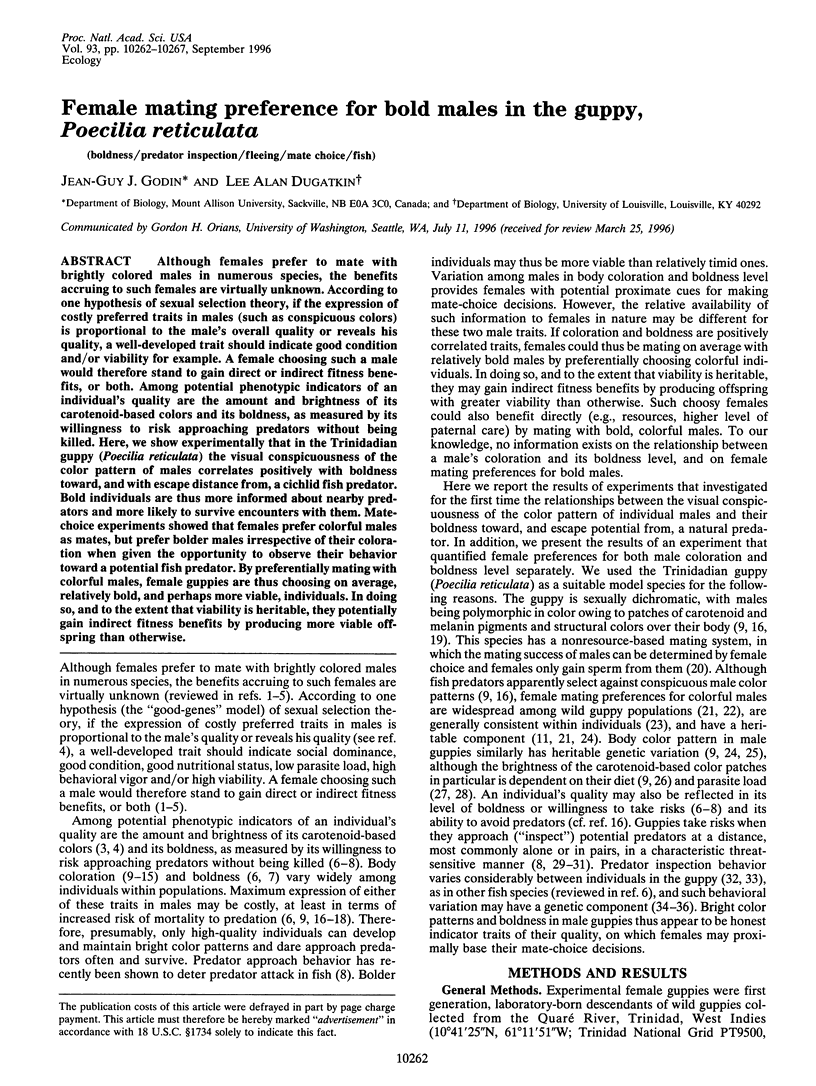
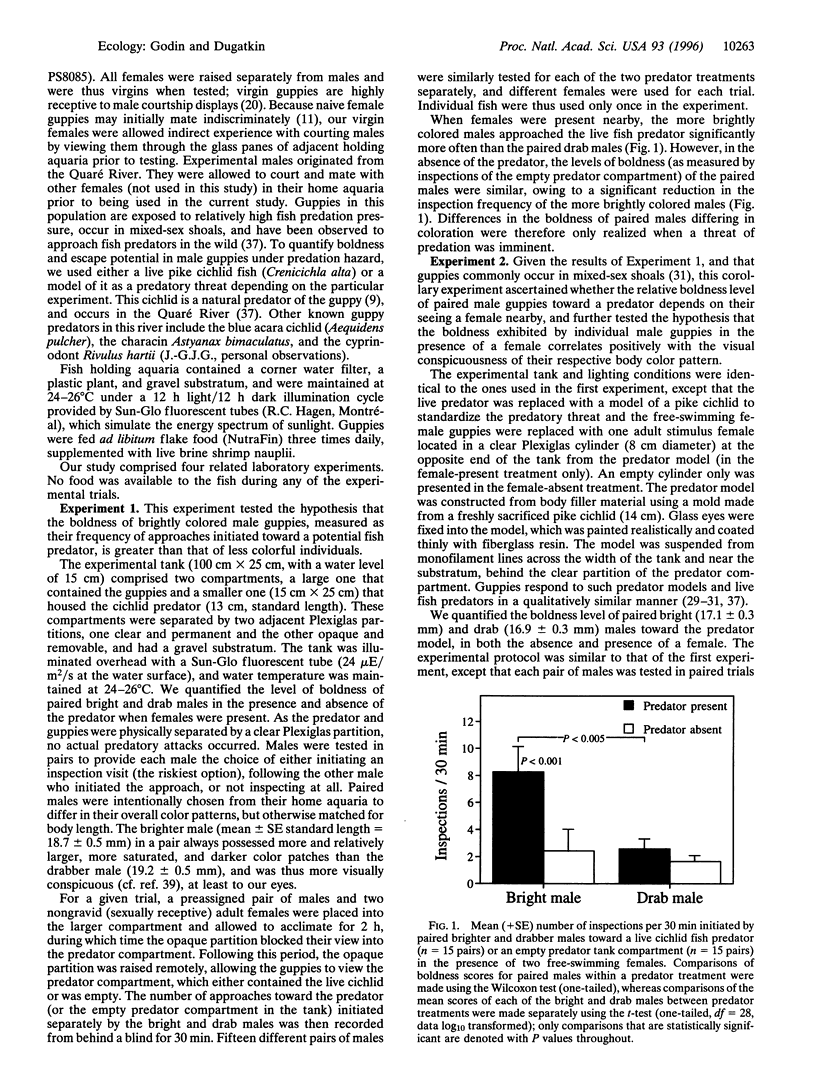
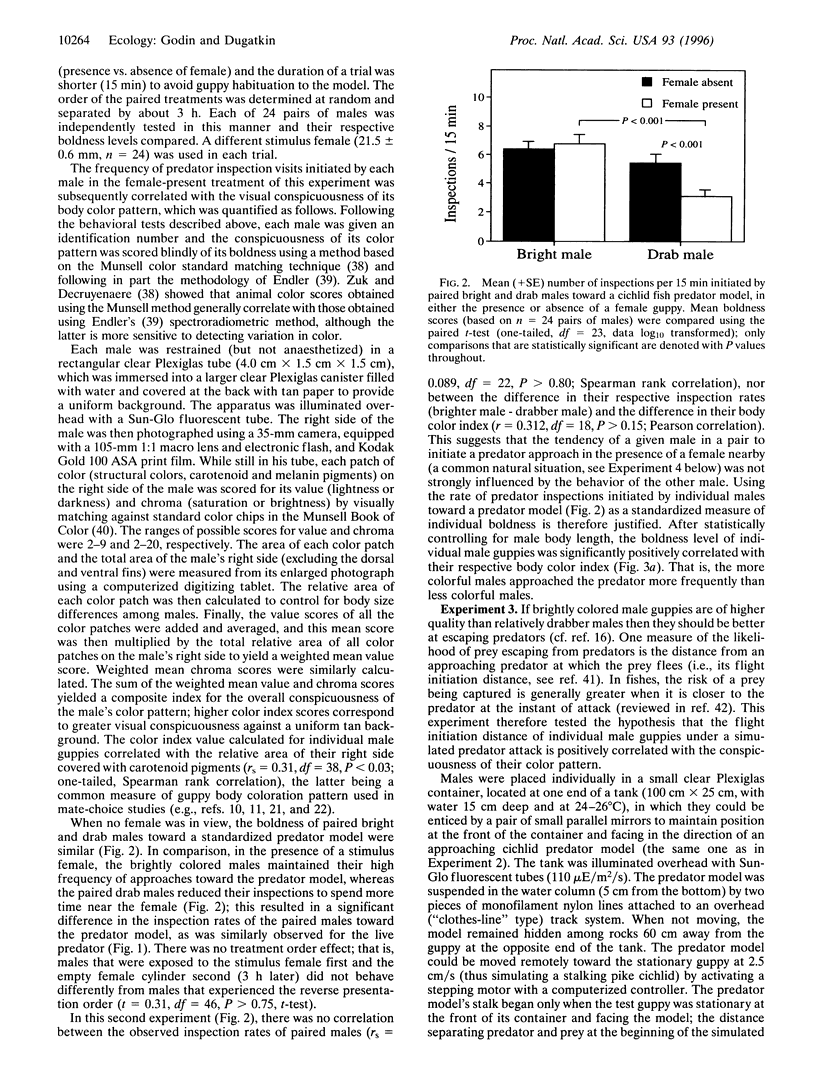
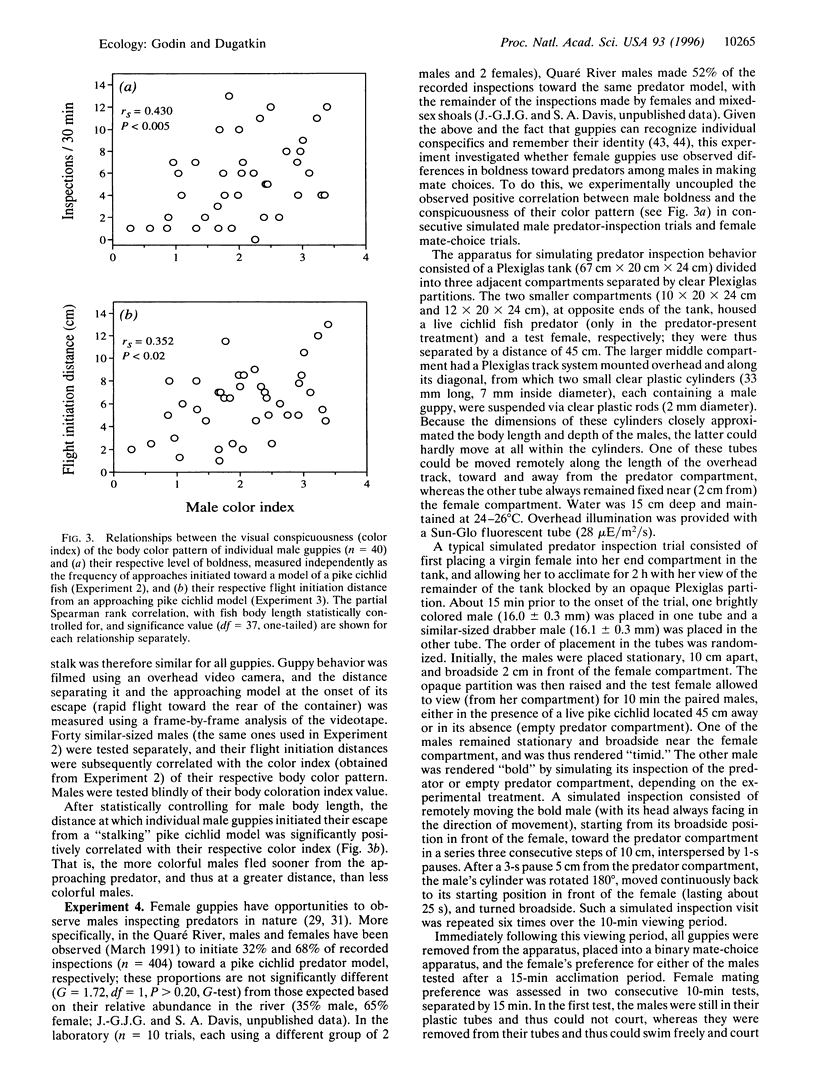
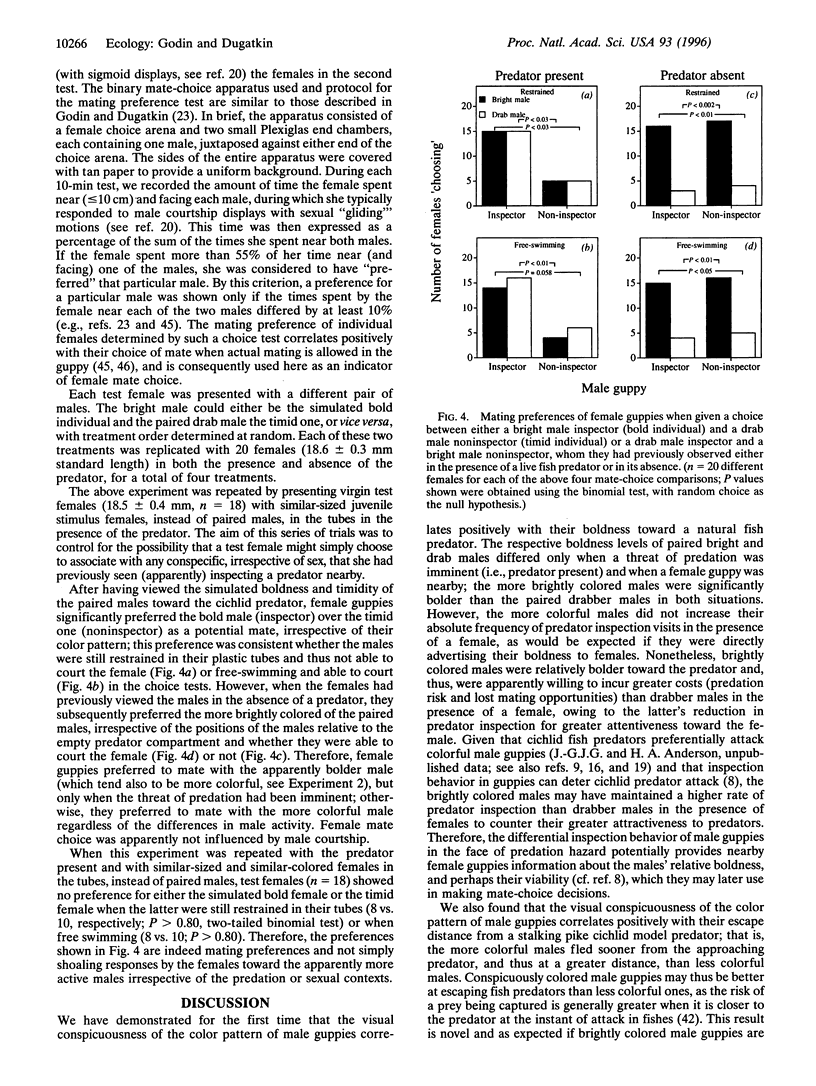
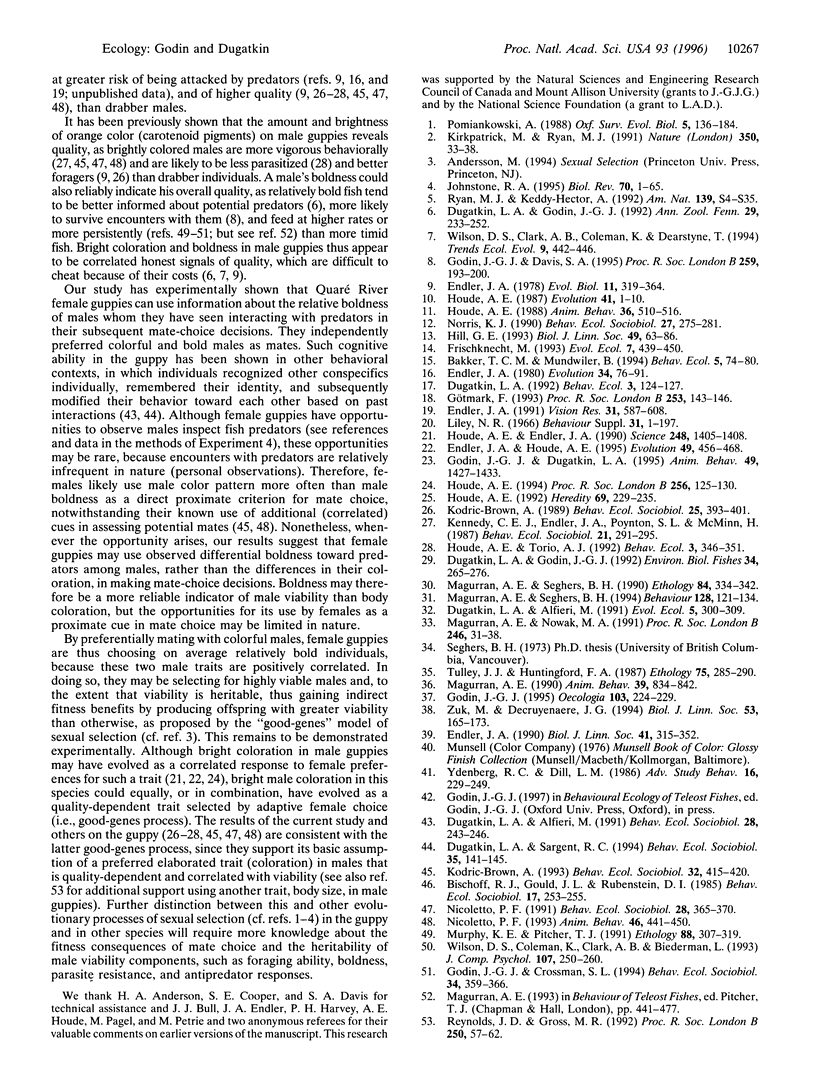
Selected References
These references are in PubMed. This may not be the complete list of references from this article.
- Endler J. A. Variation in the appearance of guppy color patterns to guppies and their predators under different visual conditions. Vision Res. 1991;31(3):587–608. doi: 10.1016/0042-6989(91)90109-i. [DOI] [PubMed] [Google Scholar]
- Houde A. E., Endler J. A. Correlated Evolution of Female Mating Preferences and Male Color Patterns in the Guppy Poecilia reticulata. Science. 1990 Jun 15;248(4961):1405–1408. doi: 10.1126/science.248.4961.1405. [DOI] [PubMed] [Google Scholar]
- Johnstone R. A. Sexual selection, honest advertisement and the handicap principle: reviewing the evidence. Biol Rev Camb Philos Soc. 1995 Feb;70(1):1–65. doi: 10.1111/j.1469-185x.1995.tb01439.x. [DOI] [PubMed] [Google Scholar]
- Magurran A. E., Nowak M. A. Another battle of the sexes: the consequences of sexual asymmetry in mating costs and predation risk in the guppy, Poecilia reticulata. Proc Biol Sci. 1991 Oct 22;246(1315):31–38. doi: 10.1098/rspb.1991.0121. [DOI] [PubMed] [Google Scholar]
- McLean R. J., Cheng K. J., Gould W. D., Costerton J. W. Cytochemical Localization of Urease in a Rumen Staphylococcus sp. by Electron Microscopy. Appl Environ Microbiol. 1985 Jan;49(1):253–255. doi: 10.1128/aem.49.1.253-255.1985. [DOI] [PMC free article] [PubMed] [Google Scholar]


